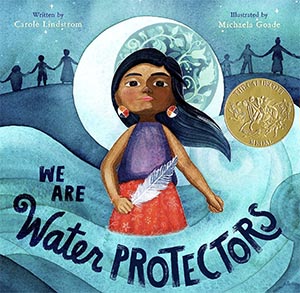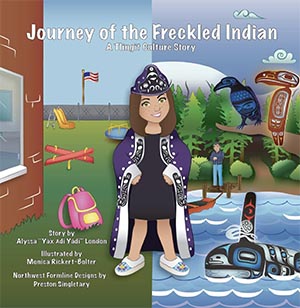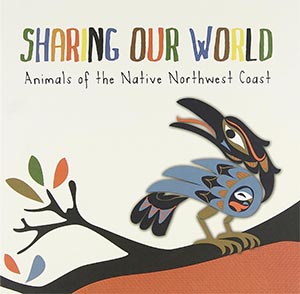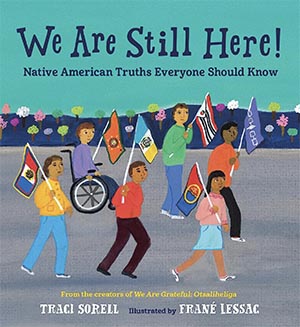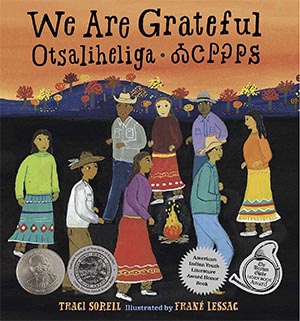My Life and Perspective as a Native American
During our P.E.A.C.E. retreat in June, we got to meet Kellie Cunningham-Bliss, who provided us with a presentation on her personal journey and perspective as a Native American. Kellie has been in the field of early childhood education for many years as a teacher and author of articles opens in a new tab regarding her native culture, injustice, and stereotypes. Kellie shared with us her path to finding her roots as well as valuable information regarding children’s literature and native customs.
Kellie, raised a Quaker, has a masters degree from Pacific Oaks in Human Development. She shared with us her story about growing up feeling too white – having fair skin and blue eyes. In her early 20s, Kellie went on a pursuit to find her Alaskan Indigenous roots. Knowing that she was part of the Haida tribe, she ended up attending a meeting of a local Tlingit & Haida (Southeastern Alaskan) cultural group, who welcomed her and “adopted” her into the group.
Kellie opened up about some of her family’s history. Her maternal great-grandmother had an arranged marriage with someone in her tribe. She didn’t want to marry him and tried to commit suicide. A white man who was a fruit farmer in Washington found her, saved her, married her, and together they had eleven children. Kellie’s great-grandmother was counted in the Canadian and American census in 1870.
Over time, Kellie looked for information on her kinship within the Haida, either Raven or Eagle, since historically it was expected that a Raven would marry an Eagle and vice versa. During COVID, Kellie was able to learn the Haida language, or Xaad Kil, which only has two or three dozen speakers left in Alaska. Kellie shared her formal introduction and her lineage in Xaad Kil and in English. Her native name is Xuuya Tla K’iiya, or Raven Who Cares for Children. Brown Bear, Killer Whale, and Wolf are her clan crests.
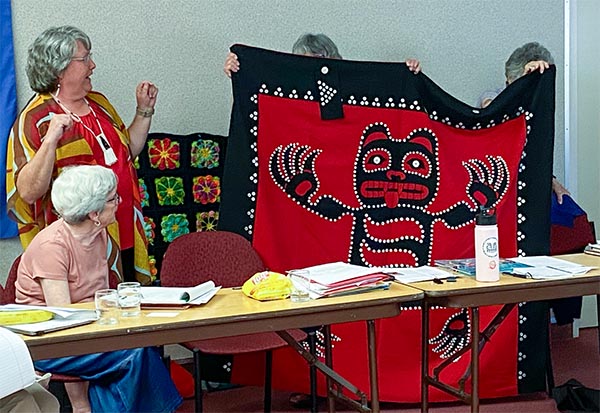
While working in the field of education, Kellie was introduced to the Sacramento Native American Higher Education Collaborative (SNAHEC) opens in a new tab, which includes local colleges and universities, regional K-12 districts, local tribal representatives, tribal health clinics, and other Native organizations. SNAHEC is a regionally based workgroup made up of Native American faculty, staff, administrators, designated community/agency or organizations, tribes, and students to discuss intersegmental designs of pathways for Native American students and solutions to improve access, retention, success and the overall experience for Native American students in public education. Kellie joined this group to find her place, and got on the committee to write legislation to bring more success to Native American college students in California community colleges.
As an educator and advocate for her people, Kellie shared some valuable information regarding children’s books for Native Americans that have many errors and promote the destruction of Native ways and values. She shared the following:
Don’t pick these books!
- Brother Eagle and Sister Sky by Susan Jeffers
- Ten Little Rabbits by Virginia Grossman
- Hiawatha, Disney version, Little Golden Book
- Raven by Gerald McDermott (illustrations are not authentic to the culture, the story is ok)
- Arrow to the Sun by Gerald McDermott (a Pueblo tale)
Do pick these books!
- We Are Water Protectors opens in a new tab by Carole Lindstrom
- Journey of the Freckled Indian opens in a new tab by Alyssa London
- Sharing Our World: Animals of the Native Northwest Coast opens in a new tab
- We Are Still Here: Native American Truths Everyone Should Know opens in a new tab by Traci Sorell
- We Are Grateful: Otsaliheliga opens in a new tab by Traci Sorell (includes Cherokee words and writing)
